 There’s a guy I follow on Twitter by the name of Craig Calcaterra. Craig is an interesting guy. He’s nominally a sportswriter, writing about baseball for NBC Sports, but he writes at least as much about politics as he does baseball. He is an unapologetic liberal who is surprisingly even-handed in his criticism of politicians of all stripes who put their own interests ahead of their constituents.
There’s a guy I follow on Twitter by the name of Craig Calcaterra. Craig is an interesting guy. He’s nominally a sportswriter, writing about baseball for NBC Sports, but he writes at least as much about politics as he does baseball. He is an unapologetic liberal who is surprisingly even-handed in his criticism of politicians of all stripes who put their own interests ahead of their constituents.
Craig is a lawyer by training, and he appears to have more than his fair share of neuroses, which he is very open and honest about in his writing. During the current pandemic we are living through, he has been keeping an online diary of what life is like in the time of COVID-19. I have really enjoyed his diary entries. Sometimes, they make me feel better, knowing that what I am going through is being shared by millions of other people. Sometimes, his diary entries make me sad or angry, particularly when he points out how chaotic and ineffective the federal government’s response to the pandemic has been. Unlike Craig, I normally don’t write about politics, but even the most apolitical observer can see how incompetent the POTUS and his minions have been during this crisis.
A friend of Craig’s who is an amateur genealogist and historian made the comment to him that lots of people are writing about official COVID-19 statistics and taking photos of the meals they are making, but those aren’t things that people in the future will want to know about our current pandemic. As a result, Craig’s friend came up with a questionnaire that is designed to elicit more relevant information about our lives during this time of crisis. I’ve answered the questions below. I’d encourage you to do the same.
When was the last day you went into work?
I don’t remember the exact date, but it was in early March. I own a small business, and I usually don’t go into the office unless there is a specific reason for me to be there. We closed the office to face-to-face meetings on March 17, 2020 as a result of the pandemic, and it has remained closed since then. However, we continue operating, working with customers over the phone and via email.
When did your state or city order everyone to stay at home?
My business is in Wisconsin, but I’ve been riding out the pandemic in Florida. In Wisconsin, we were encouraged early on to stay at home. However, people in my small community got ahead of the curve and started shutting down even before Governor Evers issued his order. The people in our county have been fantastic about following the order and being smart. As a result, we still have not recorded a single case of coronavirus.
Florida is another story. Until the past few days, Governor DeSantis has been reluctant to issue a stay-at-home order. As a result, beaches have been crowded (especially during spring break), stores have remained busy, and people have continued to go out and about. That has been changing little by little. People have started to act more appropriately to the times, and the Governor finally issued a stay-at-home order last week, after Florida began showing signs that the virus was getting a foothold in the state.
Has there been a particular change to your lifestyle that has been difficult to make or accept?
Overall, no. I spend a good deal of time by myself, writing, so the pandemic hasn’t changed that. However, I often go to restaurants or bars with friends, and that has stopped. I miss it, and I look forward to eventually getting back out for a good meal and a few drinks. The sacrifices I have made have been small and of little consequence to my lifestyle.
What do you miss most?
I miss seeing my girlfriend and my kids. My girlfriend lives over an hour away from me, and until recently, she worked a medical job where she dealt, hands-on, with elderly people. It didn’t seem like a good idea to drive up to see her, considering the circumstances. She was furloughed a little over a week ago, but we still haven’t seen each other. My kids are in Tennessee. My daughter lives in Nashville and my son is a student at the University of Tennessee in Knoxville. We text with each other every day, but I miss seeing them, which I did every 4-8 weeks before the pandemic.
What is the most unusual thing you have noticed since the crisis began?
There are a couple of things. First, the run on toilet paper seems weird to me. Stockpiling toilet paper is the sign of a very confused, desperate nation. Which leads right into the second weird thing I’ve noticed. It’s weird to me that any politician or leader could not only be so inept at running a crisis operation, but that every day, they would double down on their ineptitude. I can understand making mistakes, even though most of the mistakes I have seen are far from innocent, but I can’t understand making mistakes, having those mistakes pointed out in the press, and then going to great lengths the following day to magnify them. As a nation, we are witnessing a lack of leadership and a plethora of incompetence like we have never seen in our county’s history. It is embarrassing, disgraceful, and indefeasible.
Do you know anyone who has COVID-19?
Two people. One is a friend’s mother. Although I hope and pray for the best for her, I fear the worst. She is elderly and not in the best of health to begin with. I fear that her immune system will not stand a chance against the virus. I hope I’m wrong.
The second person is me, or, at least I think I had it. I’m hesitant to say this because I don’t want to shine a spotlight on me or gain any sympathy. That’s not my goal. However, I went on a cruise at the beginning of December and got really sick while out at sea. I had a horrible sore throat, fever, body aches, and shortness of breath. I also had a weird rattle in my throat that I’ve never experienced before.
The symptoms continued after I returned home, and I eventually went to the doctor. I was tested for the flu, strep throat, and pneumonia, but all the tests came back negative. I was given antibiotics for an assumed sinus infection, but they didn’t help. The symptoms continued through December and January, finally going away in early February. Did I have COVID-19? We’ll never know for sure. All I know is that I was much sicker than I ever have been with the flu, and I just couldn’t shake the symptoms.
Do you know anyone who has died from complications from COVID-19?
No.
How long do you think it will be before the stay-at-home order is lifted in your community?
In Wisconsin, I wouldn’t be surprised if the order continues through the end of May, maybe around Memorial Day or June 1. I wouldn’t be surprised if in Florida, the order is lifted at the end of April. The government in Florida has really not taken the pandemic as seriously as they should. Governor DeSantis seems to be of the mind that the necessary cure (social distancing) is worse than the disease. So, it wouldn’t surprise me if he lifted the stay-at-home order as a way of rescuing the economy, the virus and the people it impacts be damned.
Will you immediately return to your normal routine after the stay-at-home order is lifted? Or will you wait before returning to normal? If you’ll wait, how much longer will you do so?
I think I’ll probably go back to my normal routine—or something close to it—once the stay-at-home order is lifted. I miss seeing my loved ones, and I know I’ll be anxious to visit them, whether the stay-at-home order is lifted in April, May, or sometime beyond. Having said that, I won’t be rushing out if it looks like the order is lifted prematurely. Getting back to the old routine will have to make sense.
What’s the first thing you want to do once the stay-at-home order is lifted?
Take my girlfriend out for a good, restaurant-prepared meal. Then, I want to go see my kids. Somewhere in between, I need to get a haircut.
Have you been ordering food out from local restaurants (carry-out or delivery)?
Some, but not as much as I should. I’m concerned about the local restaurants. I’d like to keep ordering from them to help them through this tough time, but I also have health concerns with doing that. It’s a struggle I think about every day. I fear that many restaurants will not be able to come back after the pandemic has ended. The restaurant business is super tough to begin with. Add in a month or three of a pandemic, and it becomes even tougher. I should order pizza this weekend.
How often have you been going to the grocery store?
I go every 10-14 days. I’ve done a poor job of planning out my meals. If I did a better job, I could probably go less often.
Will you wear a mask when you go out?
Probably not. For some reason, I view wearing a mask out in public as a type of surrender. That’s probably a weird way to view it, but it seems like a step too close to living in a post-apocalyptic world. I’m not ready to accept that yet.
Do you think other people have been taking this crisis seriously?
Overall, yes. Speaking generally, I think most people have done a fantastic job of social distancing and being responsible. However, there are those people who have made light of what we are going through.
On a micro level, my own girlfriend has refused to stay home the way she should. She routinely runs out to stores, walks around her neighborhood talking to neighbors, and visits her daughter and grandchild often. I completely understand her desire to get out and about. She is not the type of person who easily sits and does nothing. However, we live in unusual times, and I’m not sure it’s a good idea to continue old routines (She’s going to kill me when she reads this).
On a macro level, there have been a lot of politicians and political pundits who have not taken this pandemic nearly seriously enough. To name a few:
- Sen. Rand Paul (R-Kentucky) insisted on working out in a closed gym, even after being tested. His excuse was that he hadn’t yet been told he had coronavirus. After infecting the gym, he got the word that he tested positive.
- Bill de Blasio, mayor of New York, has done a couple of different boneheaded things, despite the fact that he is mayor of the city that is at the epicenter of the coronavirus outbreak in the United States.
- And there are many, including the President, who have referred to the pandemic as a hoax, a liberal plot to bring down the president, and no worse than the flu.
- Many of these people, including Rep. Devin Nunes (R-California), have continued making irresponsible statements despite contradictory scientific evidence.
- Fox News has been among the worst offenders, spreading misinformation that is based totally in fantasy. They have contradicted easily verifiable evidence in an attempt to prop up the POTUS. In the process, they have endangered the lives of millions of Americans.
Do you think people have been over-reacting to this situation?
Generally speaking, no. Considering the circumstances, it’s hard to overreact. I did read a story this morning about a couple that committed murder-suicide because they thought the wife had coronavirus. As it turned out, she didn’t. But even if she had, a murder-suicide pact is an overreaction.
How many people do you think will eventually die from COVID-19?
In the United States, I expect that we will see deaths in the high five figure range, maybe 75,000 – 90,000 COVID-19 related deaths. However, with the way we are testing, severely limiting the number of people who can get tested, it will be difficult to determine who actually died from COVID-19. I think we’ll have an official count of around 75,000 – 90,000, but the actual figure will be much higher.
Do you think schools will reopen this year?
I don’t think so. It seems like an unnecessary risk.
Do you think that summer sports like baseball will occur?
I read this morning that MLB is considering a plan to run an abbreviated season using spring training ballparks in Arizona as the location for the games. I love baseball and want to see the season get underway. But honestly, forcing the season to take place, even an abbreviated season, under the current conditions, seems irresponsible. Think about the number of people that would be necessary to run each game. There are 25 players on each team, managers, coaches, training staff, equipment staff, umpires, catering service people, TV broadcast crews, etc. That’s easily 100 people or more in close proximity to one another. Multiply that by fifteen games per day. And what happens when the first person is diagnosed with coronavirus. Are the games cancelled and the participants quarantined? To me, it seems like too much of a risk. However, there’s a lot of money on the line, so it will probably happen.
What is one thing you’ve done during this crisis that you don’t usually do?
I’m eating at home much more often. Although I miss going out, I have to admit that I’ve enjoyed cooking my own food and eating at home. I’ve even saved a little money. I’ve also started watching online auto racing on TV and YouTube. I’ve enjoyed it more than I expected.
Is there anything that has changed in your life since this crisis began that you hope to keep after the crisis ends?
I think I’ll probably eat at home more often, and I might continue to watch online auto racing. I hope I don’t sit around as much as I have during the pandemic. I’m getting too used to doing nothing.
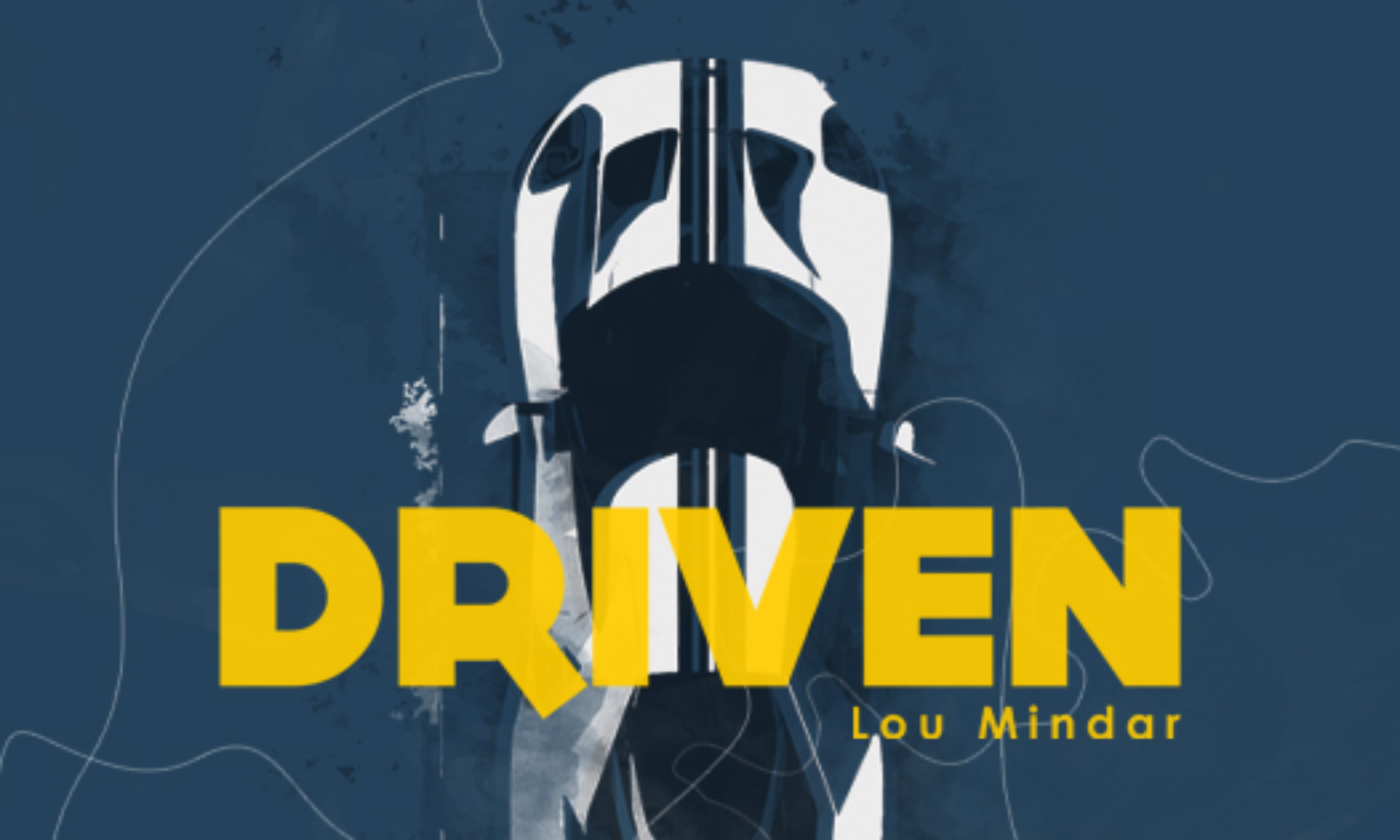
 For a change, I have some good news concerning my next book. I finally finished it!
For a change, I have some good news concerning my next book. I finally finished it!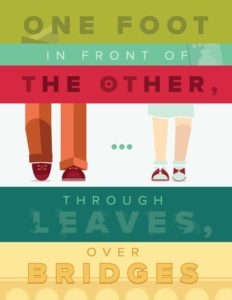 In 1968, Kurt Vonnegut publish a short story collection entitled Welcome to The Monkey House. The most mainstream of the stories, “Long Walk to Forever,” wasn’t his favorite. In fact, he disliked the story and was afraid it would overshadow his other work in the collection.
In 1968, Kurt Vonnegut publish a short story collection entitled Welcome to The Monkey House. The most mainstream of the stories, “Long Walk to Forever,” wasn’t his favorite. In fact, he disliked the story and was afraid it would overshadow his other work in the collection.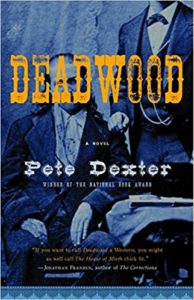 In an earlier post
In an earlier post My old website was really dated. It had gotten to the point where I couldn’t update the theme or some of the plug-ins anymore because the php code was too old (I’m not really sure what that means). I’ve been looking into new WordPress themes, or maybe even a new website builder, but I haven’t found anything I like yet.
My old website was really dated. It had gotten to the point where I couldn’t update the theme or some of the plug-ins anymore because the php code was too old (I’m not really sure what that means). I’ve been looking into new WordPress themes, or maybe even a new website builder, but I haven’t found anything I like yet. The book I’m currently working on, The Ones That Got Away, has been the most difficult thing I’ve ever written. Since beginning the novel, I have electronically lost the manuscript twice (once my fault, once not), I’ve moved, gotten sick, had a death in the family, and suffered from a streak of laziness that has gone on for months. All told, the writing of this book has taken more than four years so far. The good news is, I think it’s finally nearing an end.
The book I’m currently working on, The Ones That Got Away, has been the most difficult thing I’ve ever written. Since beginning the novel, I have electronically lost the manuscript twice (once my fault, once not), I’ve moved, gotten sick, had a death in the family, and suffered from a streak of laziness that has gone on for months. All told, the writing of this book has taken more than four years so far. The good news is, I think it’s finally nearing an end. My book,
My book, 
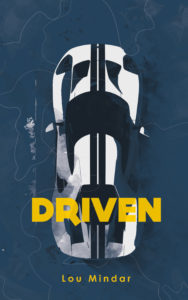
 Have you ever heard the song “Escape (The Pina Colada Song)” by Rupert Holmes? Everyone over the age of fifty or so has probably heard the song hundreds of times. It was a number one hit and was played incessantly on the radio in the late 1970s. If you’ve never heard the song, let me tell you about it.
Have you ever heard the song “Escape (The Pina Colada Song)” by Rupert Holmes? Everyone over the age of fifty or so has probably heard the song hundreds of times. It was a number one hit and was played incessantly on the radio in the late 1970s. If you’ve never heard the song, let me tell you about it. I’m getting a late jump on listing the best books I read in 2019. I’ve had some personal things going on over the past few months that have knocked me out of commission. I may write about those things here on the blog soon, or I may not say anything, and you’ll naturally assume the worst.
I’m getting a late jump on listing the best books I read in 2019. I’ve had some personal things going on over the past few months that have knocked me out of commission. I may write about those things here on the blog soon, or I may not say anything, and you’ll naturally assume the worst. 10. Station Eleven by Emily St. John Mandel – I had heard good things about Station Eleven before reading it. Unfortunately, I saw in the description of the book that the story takes place in a dystopian world following the collapse of society. I’m not really into dystopian novels. I’ve read a few and had trouble telling one from the other. Even so, I read Station Eleven and was pleasantly surprised. The story is unique, the characters are well developed, and the writer does a good job of keeping the reader engaged, not spending too much time explaining the rules of the world she has created. I’m not ready for another dystopian novel any time soon, but I’m glad I read Station Eleven.
10. Station Eleven by Emily St. John Mandel – I had heard good things about Station Eleven before reading it. Unfortunately, I saw in the description of the book that the story takes place in a dystopian world following the collapse of society. I’m not really into dystopian novels. I’ve read a few and had trouble telling one from the other. Even so, I read Station Eleven and was pleasantly surprised. The story is unique, the characters are well developed, and the writer does a good job of keeping the reader engaged, not spending too much time explaining the rules of the world she has created. I’m not ready for another dystopian novel any time soon, but I’m glad I read Station Eleven.
 8. The Long Flight Home by Alan Hlad – The Long Flight Home takes place in England during World War II and is inspired by true events. Susan lives with her grandfather, and together, they raise carrier pigeons. The British military contacts them and asks for their help delivering messages to British troops in German-occupied France. Ollie is a crop duster from Maine who is determined to join the Royal Air Force. When his plans change and he finds himself alone in England, he meets Susan, and helps her and her grandfather with the pigeons. The relationship between Susan and Ollie grows as they work together, but the fates of war are not going to make it easy for them to be together. For some reason, I can’t get enough of books that take place during World War II, and The Long Flight Home definitely fits the bill.
8. The Long Flight Home by Alan Hlad – The Long Flight Home takes place in England during World War II and is inspired by true events. Susan lives with her grandfather, and together, they raise carrier pigeons. The British military contacts them and asks for their help delivering messages to British troops in German-occupied France. Ollie is a crop duster from Maine who is determined to join the Royal Air Force. When his plans change and he finds himself alone in England, he meets Susan, and helps her and her grandfather with the pigeons. The relationship between Susan and Ollie grows as they work together, but the fates of war are not going to make it easy for them to be together. For some reason, I can’t get enough of books that take place during World War II, and The Long Flight Home definitely fits the bill. 7. Next Year in Havana by Chanel Cleeton – Next Year in Havana tells the story of a family in Cuba coming to grips with their changing lives in the face of the rise of Fidel Castro. Much has been written about this time in Cuba, but one of the things I appreciate about the author was how she wove in the struggles current day Cubans—both in Cuba and the United States—have with the island nation. She captures the love/hate relationship they had and have with Cuba. Part of the book takes place in 1958, just before the revolution, and part takes place in 2017 in both Havana and Miami, as relations between the US and Cuba are starting to thaw. I’ve always been drawn to the history and culture of Cuba. Next Year in Havana did a great job of sharing the history and immersing me in the culture of our Caribbean neighbor.
7. Next Year in Havana by Chanel Cleeton – Next Year in Havana tells the story of a family in Cuba coming to grips with their changing lives in the face of the rise of Fidel Castro. Much has been written about this time in Cuba, but one of the things I appreciate about the author was how she wove in the struggles current day Cubans—both in Cuba and the United States—have with the island nation. She captures the love/hate relationship they had and have with Cuba. Part of the book takes place in 1958, just before the revolution, and part takes place in 2017 in both Havana and Miami, as relations between the US and Cuba are starting to thaw. I’ve always been drawn to the history and culture of Cuba. Next Year in Havana did a great job of sharing the history and immersing me in the culture of our Caribbean neighbor.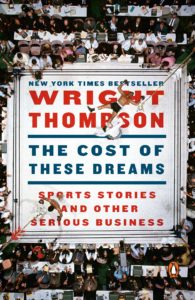 6. The Cost of These Dreams by Wright Thompson – For years, Frank DeFord was recognized as the dean of long form sports writers. He was celebrated in the pages of Sports Illustrated, and his stories carried him outside of sports onto the national stage. For me, Wright Thompson is our current version of Frank DeFord. He’s a terrific writer, but he also brings a unique perspective. He has a way of taking a subject—whether profiling former Ohio State Football Coach Urban Meyer or telling the story of a round of golf he shared with his father—and turning it into more. More meaningful, more emotional, more universal. Wright grew up in the cradle of Southern writers—Oxford, Mississippi—and brings a literary eye to sports writing. In The Cost of These Dreams, Thompson shares several essays that were previously printed in ESPN the Magazine. They showcase the depth and breadth of a true artist at the top of his craft.
6. The Cost of These Dreams by Wright Thompson – For years, Frank DeFord was recognized as the dean of long form sports writers. He was celebrated in the pages of Sports Illustrated, and his stories carried him outside of sports onto the national stage. For me, Wright Thompson is our current version of Frank DeFord. He’s a terrific writer, but he also brings a unique perspective. He has a way of taking a subject—whether profiling former Ohio State Football Coach Urban Meyer or telling the story of a round of golf he shared with his father—and turning it into more. More meaningful, more emotional, more universal. Wright grew up in the cradle of Southern writers—Oxford, Mississippi—and brings a literary eye to sports writing. In The Cost of These Dreams, Thompson shares several essays that were previously printed in ESPN the Magazine. They showcase the depth and breadth of a true artist at the top of his craft.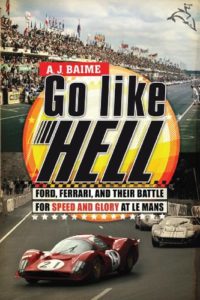 5. Go Like Hell: Ford, Ferrari and Their Battle for Speed and Glory at LeMans by A.J. Baime – Last fall, I was very excited to see the movie Ford vs Ferrari starring Matt Damon and Christian Bale. Damon plays Carroll Shelby, a legendary racer and character, and the inspiration for my daughter’s name (Shelby). But before seeing the movie, I wanted to read the book it was based on. As much as I liked the movie (I thought it was great), I liked the book even better. Go Like Hell gets into all of the details of the story that the movie didn’t have time for. The author did a great job of introducing us to the characters and slowly building the story. Everything was in just the right place. Reading Go Like Hell was a wonderful ride.
5. Go Like Hell: Ford, Ferrari and Their Battle for Speed and Glory at LeMans by A.J. Baime – Last fall, I was very excited to see the movie Ford vs Ferrari starring Matt Damon and Christian Bale. Damon plays Carroll Shelby, a legendary racer and character, and the inspiration for my daughter’s name (Shelby). But before seeing the movie, I wanted to read the book it was based on. As much as I liked the movie (I thought it was great), I liked the book even better. Go Like Hell gets into all of the details of the story that the movie didn’t have time for. The author did a great job of introducing us to the characters and slowly building the story. Everything was in just the right place. Reading Go Like Hell was a wonderful ride.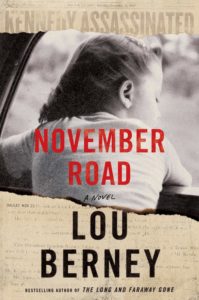 4. November Road by Lou Berney – In years past, I’ve read a lot of books written by Don Winslow. I think he’s a terrific writer and I’ve enjoyed several of his books, including The Winter of Frankie Machine, The Cartel, The Dawn Patrol, and Satori. I follow Winslow on Twitter and saw that he was recommending a book by Lou Berney. I had never heard of Berney, but I trusted Winslow’s recommendation. So, I read Berney’s book, November Road, and was blown away. November Road is an extremely well-crafted mystery novel that takes place in the 1960’s with the JFK assassination as a backdrop. I also read Berney’s book The Long and Faraway Gone in 2019, and if my list was one or two books longer, Berney would have had two books on it.
4. November Road by Lou Berney – In years past, I’ve read a lot of books written by Don Winslow. I think he’s a terrific writer and I’ve enjoyed several of his books, including The Winter of Frankie Machine, The Cartel, The Dawn Patrol, and Satori. I follow Winslow on Twitter and saw that he was recommending a book by Lou Berney. I had never heard of Berney, but I trusted Winslow’s recommendation. So, I read Berney’s book, November Road, and was blown away. November Road is an extremely well-crafted mystery novel that takes place in the 1960’s with the JFK assassination as a backdrop. I also read Berney’s book The Long and Faraway Gone in 2019, and if my list was one or two books longer, Berney would have had two books on it. 3. The River by Peter Heller – The River is the story of two college friends who go for a long canoe and camping trip in northern Canada. Their idyllic trip is interrupted by a huge wildfire closing in on them. They’re in a rush to get off the river and out of the woods, but they are halted when they hear a couple arguing in the distance, and then come upon a man paddling the river alone. Have they just run across a murderer? Will they be able to find out before the wildfire consumes them? Heller’s writing is tremendous. The world he created is serene, yet unforgiving, and his story only slows down enough so the reader can catch their breath before plunging ahead into another conflict or adventure.
3. The River by Peter Heller – The River is the story of two college friends who go for a long canoe and camping trip in northern Canada. Their idyllic trip is interrupted by a huge wildfire closing in on them. They’re in a rush to get off the river and out of the woods, but they are halted when they hear a couple arguing in the distance, and then come upon a man paddling the river alone. Have they just run across a murderer? Will they be able to find out before the wildfire consumes them? Heller’s writing is tremendous. The world he created is serene, yet unforgiving, and his story only slows down enough so the reader can catch their breath before plunging ahead into another conflict or adventure.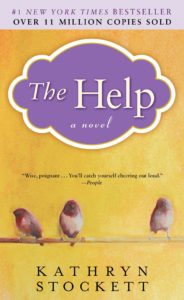 2. The Help by Kathryn Stockett – By now, I assume most of you have seen the movie, The Help, that was based on this book. Both the movie and the book were terrific, but of the two, I thought the book was better. Rather than talk about the story, I’d like to use The Help to briefly talk about something that has been in the news recently. The book, American Dirt by Jeanine Cummins, was catapulted to fame when it was selected for the Oprah Winfrey Book Club. Then, it was harshly criticized throughout the media. I haven’t read the book and don’t know if it was any good, but the quality of the writing isn’t what’s being criticized. What many pundits are critical of is the fact that a white female writer wrote about a Mexican woman and her child who flee Mexico after her family is killed, being chased into the US by narcotraffickers along the way. Critics accuse Cummins of cultural appropriation, claiming that she does not have the right to create characters or storylines that aren’t part of her lived experience. In other words, she can only write about people like her and situations she has experienced. I call BS. Kathryn Stockett, the author of The Help, is a privileged white woman who grew up in Jackson, Mississippi (where the story takes place), but she has never been black, never been poor, and never been a domestic worker in Jackson, working for rich white people. Yet, she created a wonderful and important book, not just from her own experiences, but from her research and imagination. The Help is a work of fiction, and the world would be a worse place without it.
2. The Help by Kathryn Stockett – By now, I assume most of you have seen the movie, The Help, that was based on this book. Both the movie and the book were terrific, but of the two, I thought the book was better. Rather than talk about the story, I’d like to use The Help to briefly talk about something that has been in the news recently. The book, American Dirt by Jeanine Cummins, was catapulted to fame when it was selected for the Oprah Winfrey Book Club. Then, it was harshly criticized throughout the media. I haven’t read the book and don’t know if it was any good, but the quality of the writing isn’t what’s being criticized. What many pundits are critical of is the fact that a white female writer wrote about a Mexican woman and her child who flee Mexico after her family is killed, being chased into the US by narcotraffickers along the way. Critics accuse Cummins of cultural appropriation, claiming that she does not have the right to create characters or storylines that aren’t part of her lived experience. In other words, she can only write about people like her and situations she has experienced. I call BS. Kathryn Stockett, the author of The Help, is a privileged white woman who grew up in Jackson, Mississippi (where the story takes place), but she has never been black, never been poor, and never been a domestic worker in Jackson, working for rich white people. Yet, she created a wonderful and important book, not just from her own experiences, but from her research and imagination. The Help is a work of fiction, and the world would be a worse place without it. 1. The Great Alone by Kristin Hannah – You can be pretty sure that a book is good if it stays with you for weeks after reading it. It has been six months since a read The Great Alone and I still think about it often. The story is about a family from the northwest United States who moves to Alaska in 1974 after inheriting some land. The family consists of Ernt, a former POW from the Viet Nam war, his wife, Cora, and their thirteen-year-old daughter, Leni. What they find in Alaska is a beautiful, but unforgiving, land. Life is hard, made all the harder by Ernt’s frequent angry outbursts. He beats Cora when he’s angry. She makes excuses for him, never holding a grudge. Leni loves her father, but sees his dark side and does everything she can to avoid it. When a neighbor takes steps to modernize the town in order to take advantage of tourist dollars, Ernt does everything in his power to stop the inevitable. Hannah does a masterful job crafting the characters and the storyline. The Great Alone deserves to be the best book I read in 2019.
1. The Great Alone by Kristin Hannah – You can be pretty sure that a book is good if it stays with you for weeks after reading it. It has been six months since a read The Great Alone and I still think about it often. The story is about a family from the northwest United States who moves to Alaska in 1974 after inheriting some land. The family consists of Ernt, a former POW from the Viet Nam war, his wife, Cora, and their thirteen-year-old daughter, Leni. What they find in Alaska is a beautiful, but unforgiving, land. Life is hard, made all the harder by Ernt’s frequent angry outbursts. He beats Cora when he’s angry. She makes excuses for him, never holding a grudge. Leni loves her father, but sees his dark side and does everything she can to avoid it. When a neighbor takes steps to modernize the town in order to take advantage of tourist dollars, Ernt does everything in his power to stop the inevitable. Hannah does a masterful job crafting the characters and the storyline. The Great Alone deserves to be the best book I read in 2019. I’ve been toying with writing short-short stories. This kind of writing is commonly called flash fiction and it’s usually a thousand words or fewer per story. The length varies depending on the publishing outlet. Some places restrict the word count to 100 or less, while others go as high as 1500 words.
I’ve been toying with writing short-short stories. This kind of writing is commonly called flash fiction and it’s usually a thousand words or fewer per story. The length varies depending on the publishing outlet. Some places restrict the word count to 100 or less, while others go as high as 1500 words.